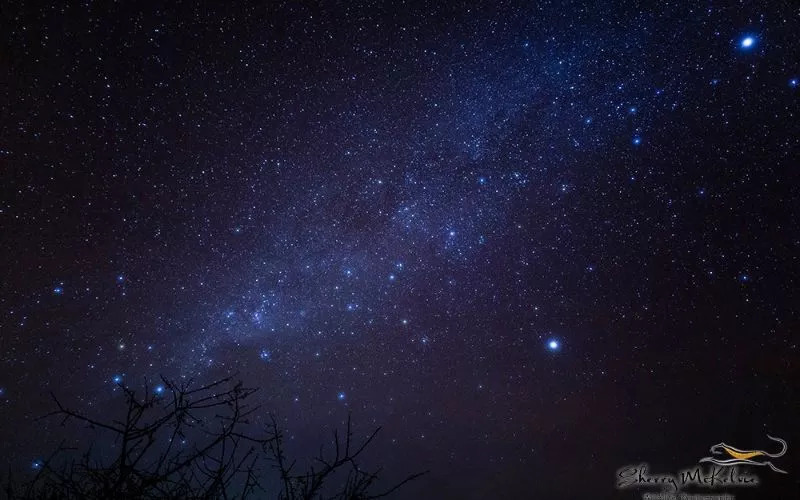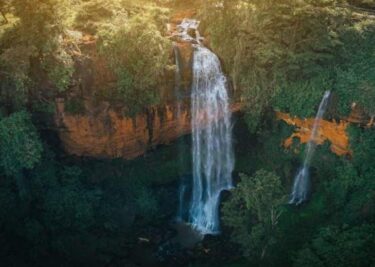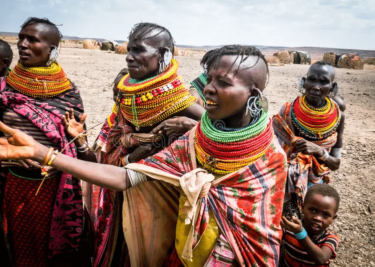Samburu Myth of Creation: From Venus to Earth

Samburu night sky. Image credit: Sherry McKelvie
“It is not in the stars to hold our destiny but in ourselves.” These words are echoed in a famous quote by William Shakespeare.
However, the Samburu people beg to differ – they firmly believe that fate is written in the stars. In this community stars are not just astral objects shimmering in the black yonder; they’re the compasses of their lives, shining on them with hidden meanings of future occurrences as well as impending disasters such as drought, disease and enemies lying in the distance. Emphasis on astrology hasn’t begun in recent years; it’s up in the skies where the stage of the Samburu creation myth is set.
The Samburu believe that in the beginning, they were inhabitants of the planet Venus, the morning star. Nkai (God) then created a “ladder” and invited them to go down the set of steps. When they came to the end of the ladder, there lay a new world that Nkai had created for them – planet Earth! They were stunned by the vastness of the land before them, and they marveled as they gladly took up the world as loikop – owners of the land.
Astronomical Prowess
Since then, the Samburu look up to the sky – especially upon the stars – for revelation on their next steps. Courtesy of this history, they are astrology aficionados renowned today for their star-gazing prowess. Even more, they have turned this pivotal aspect of their essence into a tourist activity. As sojourners from far and wide wonder at the beauty of the Samburu landscapes, culture, and wildlife during the day, they wait for nighttime to come so they can take them on celestial journeys. Here, they give visitors an unforgettable star-gazing experience, where each constellation identified is accompanied by a captivating story.
Additionally, snippets of the Samburu relationship with the stars are evident in some aspects of the community’s culture. A Samburu woman adorns her forehead with a star-shaped pendant, which points to the community’s origin on the planet Venus. Also, before a Samburu bridal procession leaves for the groom’s home, elders line up on either side of the procession to bless the newlyweds, and the resulting pattern resembles that of the constellation Orion.

Image credit: Atlas of Humanity
As a result of this solid astrological relationship, the community has a lineage of astrologers who are high priests tasked with communicating with Nkai and interpreting the messages he intends to pass to his people through the night skies. This is the Lesepen lineage, which is the family of the legendary astrologer, Shujaa Mpunyati Lesepen.
In its essence, the Samburu creation myth is more than just a story of origin, it sheds light into interconnectedness among different aspects of the cosmos, serving as a reminder that everything happens for a reason.
#CreationMyths
#SamburuMyth




2 Comments
When you call the Samburu version of human creation a “myth” you are insulting them. Their view is superior to the Jewish version that talks of their Nkai creating Adam then Eve as an afterthought.
Obviously a biased view just because they could WRITE. How many of us Kenyans can speak leave alone write the Judaic language. The Bible story is the cause of all those fights in the
Middle East even the one now in Gaza.
Think about it.
Hello, thank you so much for your feedback. When we use the word “myth” we mean, “a traditional story, especially one concerning the early history of a people or explaining a natural or social phenomenon, and typically involving supernatural beings or events.” This is one of the meanings of the word myth and we believe that speaking about creation of a community falls within this scope.